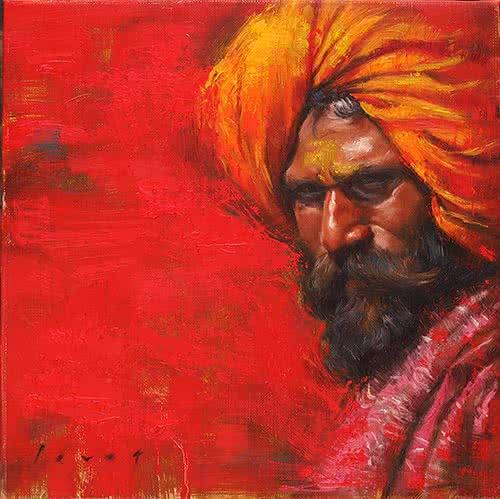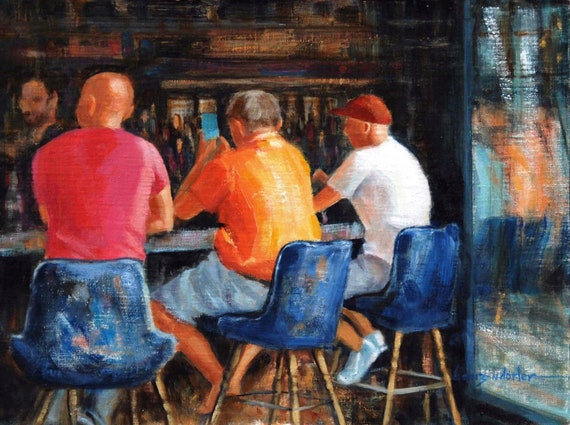The Evolution of Art: A Comprehensive Guide to Figurative Oil Painting
The Evolution of Metaphorical Oil Paint: Comprehending Its Historical Significance and Modern Interpretations
The evolution of metaphorical oil paint acts as a compelling lens via which to check out the interplay between imaginative expression and historic context. From the thorough naturalism of the Renaissance to the emotive power of the Baroque, each period has actually contributed layers of definition and method to this ageless tool. Contemporary artists, drawing from this rich heritage, are now reinterpreting the human number in manner ins which challenge traditional stories. As we check out these changes, one must take into consideration exactly how the discussion between existing and past informs not just creative practice however also social reflections in an increasingly intricate world.
Origins of Metaphorical Oil Painting
The beginnings of figurative oil painting can be traced back to the very early Renaissance in Europe, specifically in the 15th century. The development of oil paint enabled for better depth of color and information, boosting the realistic look and vibrancy of their work.

In this transformative age, figures were commonly illustrated within contextually abundant settings, showcasing not just their physical qualities however likewise their mental states. Pioneers such as Jan van Eyck and Titian utilized the medium's flexibility, employing layering techniques to attain luminance and appearance. This advancement assisted in the portrayal of intricate textiles and the nuances of skin tones, contributing to the development of portraiture and narrative scenes.
Moreover, the Renaissance emphasis on humanism fostered an appreciation for uniqueness, which subsequently influenced musicians to produce more relatable and vibrant figures - figurative oil painting. Consequently, metaphorical oil painting arised as a powerful lorry for narration and emotional involvement, laying the groundwork for future artistic activities and styles
Key Historic Movements
Substantial historical activities have formed the evolution of metaphorical oil painting, each adding special viewpoints and techniques that broadened the medium's possibilities. The Renaissance noted a turning point, emphasizing realistic look and the human form, with artists like Leonardo da Vinci and Michelangelo pressing the boundaries of physiological accuracy and point of view. Following this, the Baroque period brought remarkable contrasts of light and darkness, exemplified by Caravaggio, who infused spiritual motifs with intense emotionality.
The 19th century presented Romanticism and Realistic look, where artists such as Delacroix and Courbet tested classical suitables, concentrating on individual expression and daily life. The introduction of Impressionism better transformed the tool by stressing the effects of light and color, causing a departure from conventional depiction.
In the very early 20th century, movements like Expressionism and Cubism redefined metaphorical paint with abstraction and the expedition of psychological depth. Each of these activities not only showed the societal modifications of their times however additionally prepared for contemporary interpretations. The interplay between these historic activities has produced an abundant tapestry of designs and philosophies, influencing contemporary artists in their quest of catching the human experience on canvas.
Techniques and Products Advancement

Throughout the Baroque period, strategies such as chiaroscuro and sfumato emerged, boosting the psychological vibration of figurative structures. Musicians began to explore glazes and impasto, adjusting structure and luminosity. By the 19th century, technologies like the usage of pre-mixed paints in tubes transformed accessibility, permitting artists to repaint en plein air and capture the short lived effects of light.
The 20th century observed the introduction of artificial pigments and mediums, which broadened the palette and changed the consistency of oil paints. The exploration of brand-new application techniques, such as scheme knives and brushes of varying tightness, further diversified imaginative expression. Collectively, these developments mirror the progressing partnership between materials, techniques, and the creative vision intrinsic in metaphorical oil painting.

Contemporary Interpretations
Contemporary interpretations of figurative oil painting reflect a dynamic discussion in between tradition and development, where artists challenge developed norms and explore diverse motifs. This development shows up in various means, as modern musicians blend classic methods with contemporary ideas, commonly resolving social, political, and personal narratives.
Many practitioners attract ideas from historic works, yet they infuse their pieces with contemporary viewpoints, making use of the human kind as a lorry for commentary on gender, culture, and identification. Artists significantly explore abstraction, distortion, and multimedias, which permits a broader analysis of the number and its context.
Furthermore, the use of vivid shade combinations and unique structures commonly offers to interrupt conventional viewing experiences, prompting vital engagement from target markets. This change in focus extends past appearances; it shows a growing recognition of the complexities of human experience in an interconnected world.
As metaphorical oil painting continues to evolve, it continues to be a crucial medium for exploring the nuances of modern life, embodying both a respect for heritage and a dedication to modern thought. The result is an abundant tapestry of expression that resonates with the intricacies of the modern human condition.
Effect On Modern Art
The influence of figurative oil painting his response on modern art is extensive, as it has actually constantly influenced a myriad of imaginative movements and methods throughout the 21st and 20th centuries. From Expressionism to Surrealism and past, the expedition of the human figure has stayed a main motif, permitting artists to communicate complicated feelings and stories. This focus on figurative representation has resulted in a re-examination of Look At This standard strategies, causing cutting-edge approaches that blend realism with abstraction.
Additionally, modern artists have accepted figurative oil painting as a way to attend to political and social concerns, making use of the tool to test assumptions of sex, culture, and identity. The resurgence of interest in figurative operate in recent years reflects a hoping for link in a significantly electronic globe, where human experience and feeling are vital.
Furthermore, the dialogue between figurative oil paint and modern-day art appears in the jobs of artists such as Kehinde Wiley and Jenny Saville, who make use of historic recommendations while infusing their pieces with modern significance. Eventually, figurative oil paint remains to shape and redefine modern artistic expression, underscoring its enduring value in the art globe.
Final Thought
The evolution of metaphorical oil paint highlights its historic importance and flexibility across different imaginative movements. Eventually, metaphorical oil painting continues to be a vital medium for discovering the human experience, resonating exceptionally in today's electronic landscape.
The evolution of figurative oil paint offers as a compelling lens with which to check out the interaction between creative expression and historical context.Considerable historic activities have shaped the development of metaphorical oil paint, each adding unique approaches and strategies that increased the medium's possibilities.As historical motions formed the trajectory of figurative oil paint, the materials and methods used by musicians have actually also undergone considerable makeovers. figurative oil painting.The impact of figurative oil painting on modern art is profound, as it has constantly inspired a Related Site myriad of imaginative movements and practices throughout the 20th and 21st centuries.The evolution of figurative oil paint highlights its historic relevance and flexibility across numerous creative movements